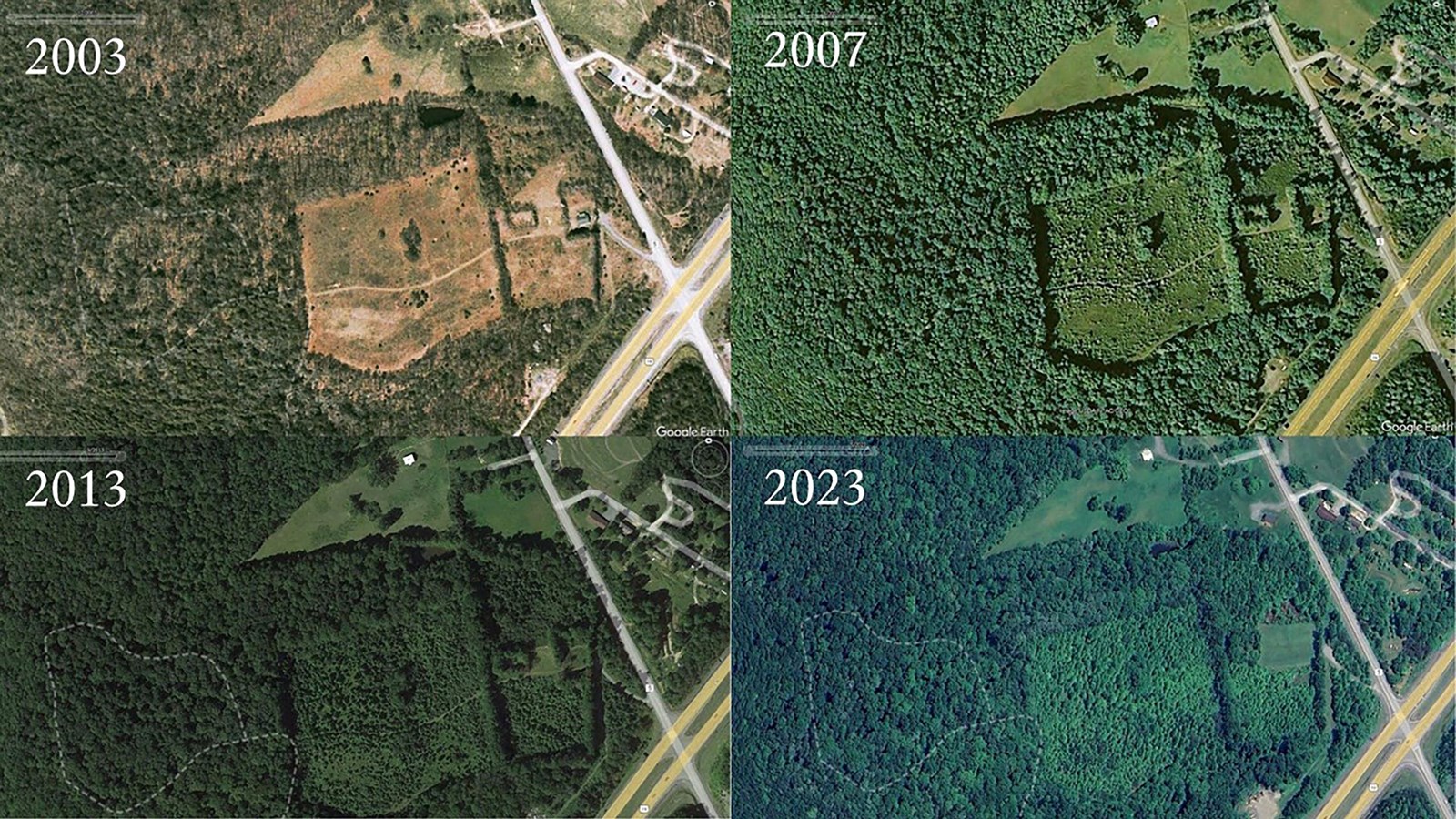Last updated: July 16, 2025
Place
Burnwood Trail Stop 3: Forest Succession

Aerial footage captured in Google Earth
Old-Growth Forest Hike Stop 3 - Forest Succession
The forest to your right is in stark contrast with the forest along the rest of this trail. This young forest was an old field probably used for livestock, hay, or a yard. Aerial imagery from Google Earth reveals that the National Park Service stopped mowing the field in the mid-2000s and young tulip poplar trees have quickly infilled. Tulip poplars are not tolerant of shade and are quick to establish in open areas with high sunlight.
This young forest is an example of a secondary, early successional forest that is in the beginning stages of development. Succession is the process by which vegetation communities change in species composition and structure through time as the ecosystem matures. This forest is considered even-aged, where all of the trees began growing at the same time after mowing stopped. Old-growth forests are late-successional and uneven-aged, where trees naturally grow to their upper age limits and numerous canopy layers and ages of trees can be found. The uneven-age of older forests is evidence that the trees didn’t all establish after a large human disturbance that cleared the entire area. Instead, numerous smaller events such as infrequent windstorms create gaps in the canopy and allow for new growth to establish once sunlight reaches the forest floor.
